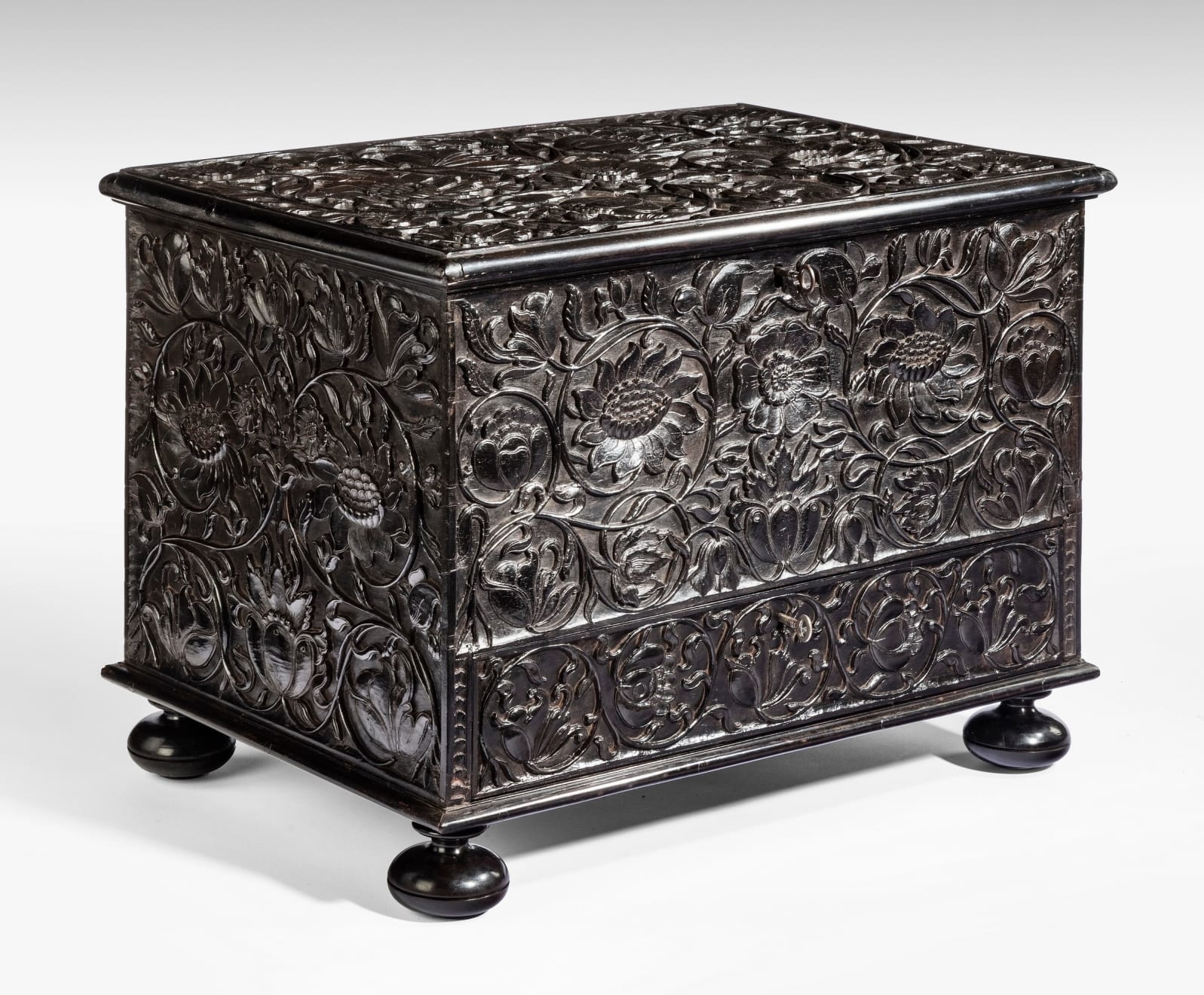Late 17th/Early 18th Century Batavian Carved Ebony Casket
INDONESIA, CIRCA 1680-1720
39.1 x 53 x 37.1 cm
15 ½ x 21 x 14 ¾ in
15 ½ x 21 x 14 ¾ in
6833
Further images
Profusely carved to the lid and body with deep, half relief arabesques and vines of stylized lotus flowers, with a keyhole and key to the front, over a drawer with...
Profusely carved to the lid and body with deep, half relief arabesques and vines of stylized lotus flowers, with a keyhole and key to the front, over a drawer with a keyhole and key, the lid with decorative shaped brass hinges, raised on bun feet, the interior and drawer lined with red velvet.
This type of furniture is associated with the workshops of Batavia (present-day Jakarta) which became the centre of the Dutch East India Company's trading network in Asia and European-style furniture was made for the Dutch elite in the region. According to Van Campen, the floral decoration was made to fit the senior Dutch officials’ demands. (Van Campen, Asian Splendour: Company Art in the Rijksmuseum, Walburg Pers, Amsterdam, 2011, p 54 and 56, fig.34). This casket is typical of the style which incorporated Indonesian and Dutch motifs.
A large ebony cabinet on a stand, circa 1680-1720 (published in J. Veenendaal, Furniture from Indonesia, Sri Lanka and India during the Dutch Period, Foundation Volkenkundig Museum Nusantara, Delft, 1985, p.25, fig. 23) has large lotus floral carvings similar to the decoration on our chest.
An example of similar size to ours, also dated 1680-1720 can be found in the National Trust Collection at Kingston Lacy, Dorset (NT 1254544.1.1).
This type of furniture is associated with the workshops of Batavia (present-day Jakarta) which became the centre of the Dutch East India Company's trading network in Asia and European-style furniture was made for the Dutch elite in the region. According to Van Campen, the floral decoration was made to fit the senior Dutch officials’ demands. (Van Campen, Asian Splendour: Company Art in the Rijksmuseum, Walburg Pers, Amsterdam, 2011, p 54 and 56, fig.34). This casket is typical of the style which incorporated Indonesian and Dutch motifs.
A large ebony cabinet on a stand, circa 1680-1720 (published in J. Veenendaal, Furniture from Indonesia, Sri Lanka and India during the Dutch Period, Foundation Volkenkundig Museum Nusantara, Delft, 1985, p.25, fig. 23) has large lotus floral carvings similar to the decoration on our chest.
An example of similar size to ours, also dated 1680-1720 can be found in the National Trust Collection at Kingston Lacy, Dorset (NT 1254544.1.1).














